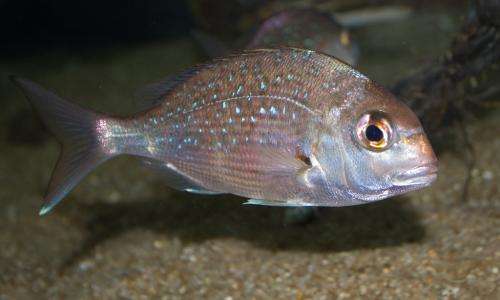Baited video carries baseline data in Cockburn Sound

Annual surveys investigating fish assemblages within Cockburn Sound over six years have led to two important findings that have enabled effective monitoring of fish ecology in the face of proposed developments.
Scientists from the WA Fisheries and Marine Research Laboratories uncovered differences in the fish assemblages between natural and anthropogenically-modified habitats—and found that baited videos were more effective as a sampling technique than fish traps.
Cockburn Sound, one of the few marine embayments in WA, provides snapper (Pagrus auratus) – a commercially and recreationally important species – and other species such as blue swimmer crabs and King George whiting, with an important spawning and nursery area.
Lead author, Corey Wakefield, from WA Fisheries and Marine Research Laboratories says one of the largest of the proposed developments to Cockburn Sound is Kwinana Quays.
"[It] will include additional rockwall and dredged habitats for the eastern margin of Cockburn Sound," Dr Wakefield says.
"It was unclear how these modified habitats would influence the fish assemblages.
"These two modified habitat types already existed in Cockburn Sound, which facilitated assessments prior to construction."
The first set of sampling occurred in June and July 2008, using baited videos across 51 sites over four days, followed by the opera-house fish traps at the same sites one week later for four days.
While only 1040 fish from 27 species were sampled using the traps, the baited videos sampled 3944 fish from 43 species, enabling greater discrimination of fish assemblages between habitats.
Baited video also allowed for direct comparisons between fish assemblages and habitat characteristics within the camera's field of view, and was a non-extractive method.
In addition, they found the fish assemblages associated with modified habitats contained a subset of species and in lower abundances compared to natural habitats with similar physical characteristics.
For example, 40 versus 22 fish species associated with limestone outcrops and rockwall habitats, respectively.
"The markedly higher diversity and abundances of fish associated with seagrass and limestone outcrops suggests they play an important role in the fish ecology of Cockburn Sound," Dr Wakefield says.
"However, these two natural habitat types are very limited in this embayment."
"We suggest the rockwall construction be over soft sediment areas to avoid the reduction or loss of naturally occurring seagrass and limestone outcrop habitats."
Monitoring using baited video has continued annually every winter since the commencement of this study, and is contributing toward establishing an annual recruitment index for snapper.
"This will be useful for assessing and monitoring impacts on the fish ecology from any future anthropogenic modifications in this embayment," Dr Wakefield says.
More information: Wakefield CB, Lewis PD, Coutts TB, Fairclough DV, Langlois TJ (2013) "Fish Assemblages Associated with Natural and Anthropogenically-Modified Habitats in a Marine Embayment: Comparison of Baited Videos and Opera-House Traps." PLoS ONE 8(3): e59959. DOI: 10.1371/journal.pone.0059959
Journal information: PLoS ONE
Provided by Science Network WA

















